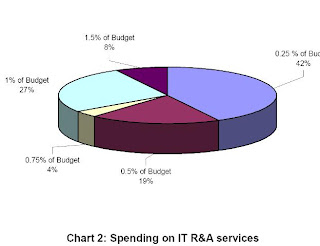 One of the few academic papers discussing analyst influence was published at UCLA’s Anderson school of management in the summer of 2002. Sadly, the paper’s not been widely cited; I wouldn’t have come across it had I not been studying in an Anderson summer school that year.
One of the few academic papers discussing analyst influence was published at UCLA’s Anderson school of management in the summer of 2002. Sadly, the paper’s not been widely cited; I wouldn’t have come across it had I not been studying in an Anderson summer school that year.
In the research, David Firth and E. B. Swanson surveyed a non-random sample of Anderson school alumni and associates. In 2005, the same authors published a paper along similar lines in Business Horizons. A total of 371 firms were solicited for the 2002 study, and 88 responses were received, for an excellent response rate of 24%. It found that 74% of the Californian businesses surveyed used IT research and advisory services, predominantly those of Gartner.
The research found that users of analyst firms principally used four services:
- Research reports (97% of respondents)
- Attending events (74%)
- Talking directly with analysts (69%)
- Hiring analyst firms for specific consulting projects (42%).
What’s also very useful is that the study asked firms to indicate what percentage of their revenues are spend on analysts. The results, show in the chart above, are very interesting.

